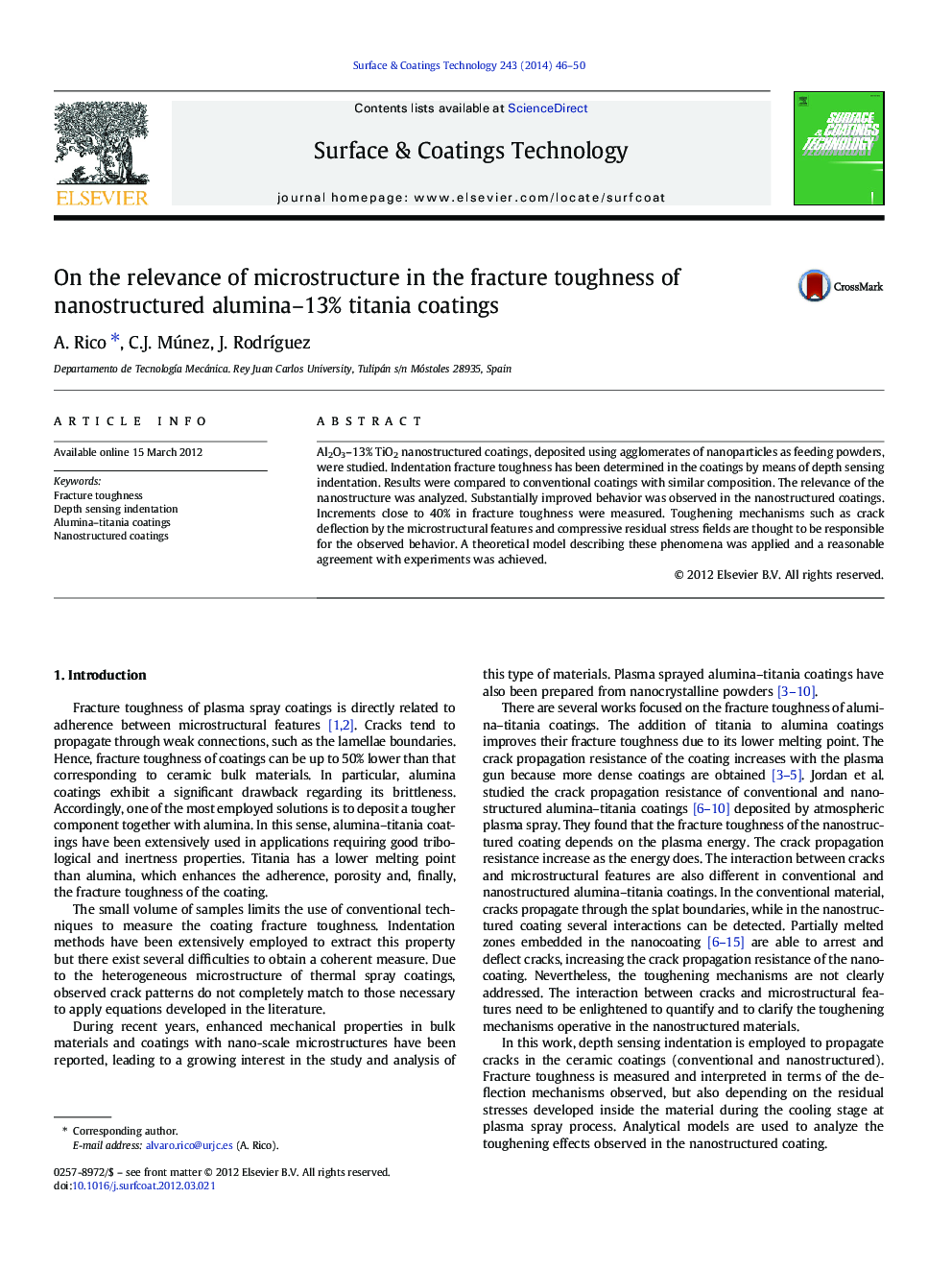| Article ID | Journal | Published Year | Pages | File Type |
|---|---|---|---|---|
| 1657576 | Surface and Coatings Technology | 2014 | 5 Pages |
Al2O3–13% TiO2 nanostructured coatings, deposited using agglomerates of nanoparticles as feeding powders, were studied. Indentation fracture toughness has been determined in the coatings by means of depth sensing indentation. Results were compared to conventional coatings with similar composition. The relevance of the nanostructure was analyzed. Substantially improved behavior was observed in the nanostructured coatings. Increments close to 40% in fracture toughness were measured. Toughening mechanisms such as crack deflection by the microstructural features and compressive residual stress fields are thought to be responsible for the observed behavior. A theoretical model describing these phenomena was applied and a reasonable agreement with experiments was achieved.
► Fracture behavior of alumina-titania coatings was studied using nanoindentation. ► Fracture toughness is higher in nanostructured coatings than in conventional one. ► Hierarchical microstructure of nanostructured coating promotes toughening mechanisms. ► The main toughening effect seems to be compressive residual stresses fields. ► An analytical model, describing the main toughening mechanism, was applied.
